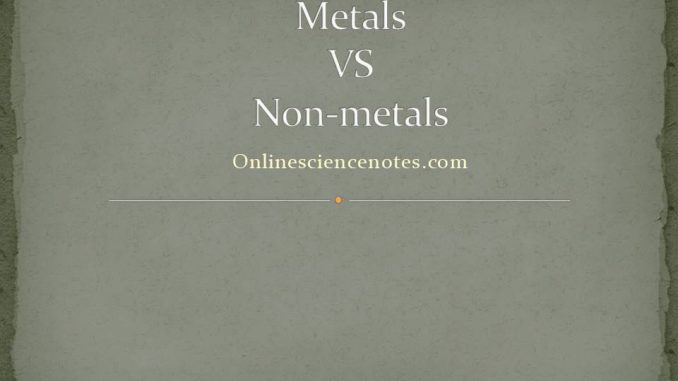
| S.N. | Metals | Non-metals |
| 1. | Metals are usually solids at room temperature. {Exception: Mercury (Hg) and Gallium (Ga) are liquid metals}. | Non-metals usually are solids or gas at ordinary temperature. {Exception: Bromine (Br) is liquid non-metal}. |
| 2. | They usually have high melting and boiling points. The exceptions are Lithium, Sodium and Potassium which melt and boil at low temperatures. | They usually have low melting and boiling points. The exceptions are Carbon, Boron and Silicon which are solids with high melting and boiling points. |
| 3. | Metals are usually malleable, i.e. they can be rolled or hammered into thin sheets without breaking. | Non- metals are non–malleable. They are usually brittle and become powder when beaten. |
| 4. | They are usually ductile,i.e. they can be drawn into thin wires without breaking. | They are non-ductile, so they can’t be drawn into wires. |
| 5. | Metals are usually hard. Sodium and Potassium are soft. Sodium is so soft that it can be cut with a knife. | Non-metals usually are light and soft, but Carbon in the form of diamond is the hardest substance known. |
| 6. | They are good conductors of heat and electricity. | Generally, they are bad conductors of heat and electricity, but graphite is a good conductor of electricity. |
| 7. | Metals usually have a metallic lustre and can be polished to give a highly reflective surface. | Non-metals usually don’t have lustre and cannot be polished like metals. |
| 8. | Metals usually are sonorous and produce ringing sound on collision. | They are non-sonorous and don’t produce ringing sound. |
| 9. | Most metals form alloys (mixture of metals). | Non-metals don’t form alloys. |